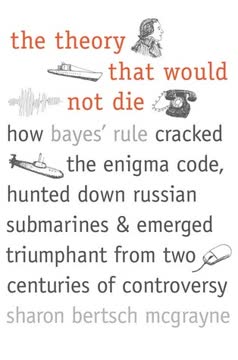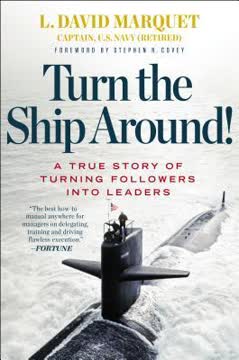Key Takeaways
1. Flexible Dieting: The Anti-Diet Approach
What if I told you that you could dramatically transform your body eating foods you actually like…every day…seven days per week?
Embrace dietary freedom. Flexible dieting, often dubbed the "anti-diet," liberates you from restrictive eating plans by prioritizing how much you eat over what you eat. This approach emphasizes tailoring your food choices to your preferences, goals, and lifestyle, fostering long-term compliance and sustainable results. It's about creating a lifestyle, not enduring a temporary ordeal.
Key tenets of flexible dieting:
- Prioritize calorie and macronutrient targets.
- Incorporate foods you enjoy into your daily meals.
- Forgive dietary lapses and get back on track.
- View dieting as a sustainable lifestyle change.
Practical application. Instead of eliminating entire food groups, flexible dieting encourages you to make informed choices that align with your calorie and macronutrient goals. For example, if you crave pizza, you can incorporate it into your meal plan by adjusting other meals to stay within your targets. This approach reduces the psychological burden of dieting and makes it easier to stick to your plan.
2. Energy Balance: The Unshakable Foundation of Weight Management
A century of metabolic research has proven, beyond any shadow of a doubt, that energy balance, operating according to the first law of thermodynamics, is the basic mechanism that regulates fat storage and reduction.
Calories in vs. calories out. Energy balance is the cornerstone of weight management, dictating whether you gain, lose, or maintain weight. It's the relationship between the energy you consume (calories in) and the energy you expend (calories out). To lose weight, you must expend more energy than you consume, creating a calorie deficit.
Understanding energy expenditure:
- Basal Metabolic Rate (BMR): The energy your body uses at rest.
- Total Daily Energy Expenditure (TDEE): The total energy your body burns in a day, including activity.
Calculating your calorie needs. To determine your calorie target for weight loss, calculate your TDEE and then create a moderate calorie deficit of 20-25%. This can be achieved by reducing your calorie intake or increasing your physical activity. Remember, consistency is key.
3. Macronutrient Balance: Protein is King
Eat too little protein while restricting your calories for fat loss, and you’ll lose a significant amount of muscle as well.
Beyond calories: macronutrient ratios. While energy balance dictates weight loss, macronutrient balance influences body composition. Protein, carbohydrates, and fats each play distinct roles in your body, and optimizing their intake is crucial for building muscle and losing fat. Protein is the most important macronutrient for fitness enthusiasts.
Protein's crucial role:
- Preserves lean muscle mass during calorie restriction.
- Supports muscle growth when in a calorie surplus.
- Increases satiety, helping control appetite.
Protein intake recommendations. Aim for 0.8 to 1 gram of protein per pound of body weight per day if you're relatively lean and not dieting for fat loss. If you're dieting, increase your intake to 1 to 1.2 grams per pound. For overweight individuals, focus on fat loss first and set protein intake at 1 to 1.2 grams per pound of lean mass.
4. Food Choices: Volume and Nutrient Density Matter
You see, foods don’t have any special properties that make them better or worse for weight loss or gain.
Not all foods are created equal. While you can technically lose weight eating any food as long as you maintain a calorie deficit, the type of food you eat impacts satiety, nutrient intake, and overall health. Prioritize foods that are low in calories but high in volume and nutrients.
Foods for weight loss:
- Lean meats
- Whole grains
- Fruits and vegetables
- Low-fat dairy
Foods to limit:
- Caloric beverages
- Candy and sugary treats
- Oils, bacon, butter
- Low-fiber fruits and whole-fat dairy
The 80/20 rule. Aim to get 80% of your daily calories from relatively unprocessed, nutrient-dense foods, leaving 20% for your favorite indulgences. This approach allows you to enjoy your diet while still achieving your fitness goals.
5. Cardio: Less Can Be More
You should do as much cardio as it takes to achieve your goals and no more, and it shouldn’t be so much that it significantly impairs your physical performance, recovery, or health.
Cardio's role in fat loss. Cardio can be a valuable tool for accelerating fat loss, but it's not essential. Many people overestimate the amount of cardio needed to achieve their goals. Excessive cardio can lead to overtraining, impair recovery, and even hinder muscle growth.
Potential downsides of excessive cardio:
- It's easy to overeat the calories you burn.
- Your body adapts to reduce caloric expenditure.
- Cardio doesn't preserve muscle mass.
Finding the right balance. Aim for the minimum amount of cardio needed to achieve your goals without compromising your health or performance. For many, this may be just an hour or two per week. Remember, diet is the primary driver of weight loss.
6. HIIT vs. LISS: The Efficiency Showdown
In fact, a study conducted by researchers at the University of Western Ontario showed that doing just four to six 30-second sprints burns more fat over time than 60 minutes of incline treadmill walking.
High-intensity interval training (HIIT) vs. low-intensity steady-state (LISS). When it comes to cardio, not all methods are created equal. HIIT, which involves alternating periods of high-intensity exertion and low-intensity recovery, is more effective for fat loss than LISS.
Benefits of HIIT:
- Shorter sessions result in greater fat loss.
- Targets stubborn abdominal fat.
- Increases resting metabolic rate.
- Improves insulin sensitivity.
- Suppresses appetite.
HIIT recommendations. Aim for no more than four HIIT sessions per week, with each session lasting no more than 25-30 minutes. Choose activities like biking, rowing, or sprinting to minimize muscle loss. Remember to warm up and cool down properly.
7. Fasted Cardio: Targeting Stubborn Fat
As catecholamines are better able to mobilize fat when you’re in a fasted state, fasted weightlifting is also a worthwhile fat loss strategy.
Training on empty. Fasted cardio involves exercising in a fasted state, when insulin levels are low and your body is more likely to burn fat for fuel. This strategy can be particularly effective for targeting stubborn fat, such as lower abdominal fat in men and hip/thigh fat in women.
How fasted cardio works:
- Increases blood flow to stubborn fat areas.
- Enhances the fat-burning effects of catecholamines.
- May lead to greater overall fat oxidation.
Practical considerations. If you choose to do fasted cardio, consider supplementing with HMB to minimize muscle breakdown. Also, be aware that you may experience reduced strength and energy levels during your workouts. Listen to your body and adjust accordingly.
8. The Power of Habit: Mini-Habits for the Win
The easiest way to do big things is to learn to do and celebrate really, really small things first.
Small changes, big impact. Building sustainable fitness habits requires a shift in mindset. Instead of attempting massive, sweeping changes, focus on implementing small, manageable "mini-habits" that you can consistently perform.
Key principles of mini-habits:
- Start with ridiculously small actions.
- Focus on consistency over intensity.
- Celebrate small wins to reinforce behavior.
- Gradually increase the scope of your habits.
Examples of mini-habits:
- Do 10 push-ups per day.
- Walk for 15 minutes.
- Follow your meal plan for one day.
- Replace one cup of soda with water.
Last updated:
Review Summary
Cardio Sucks receives mixed reviews, with an average rating of 3.80 out of 5. Many readers appreciate the scientific approach and concise information on fat loss and muscle preservation. The book challenges traditional cardio methods, advocating for HIIT and strength training. Some find it informative and motivating, while others criticize it for lacking depth or repeating content from the author's previous works. Readers value the practical tips on nutrition and exercise selection, though some desired more detailed workout plans or disagreed with certain recommendations.
Similar Books










Download PDF
Download EPUB
.epub digital book format is ideal for reading ebooks on phones, tablets, and e-readers.









